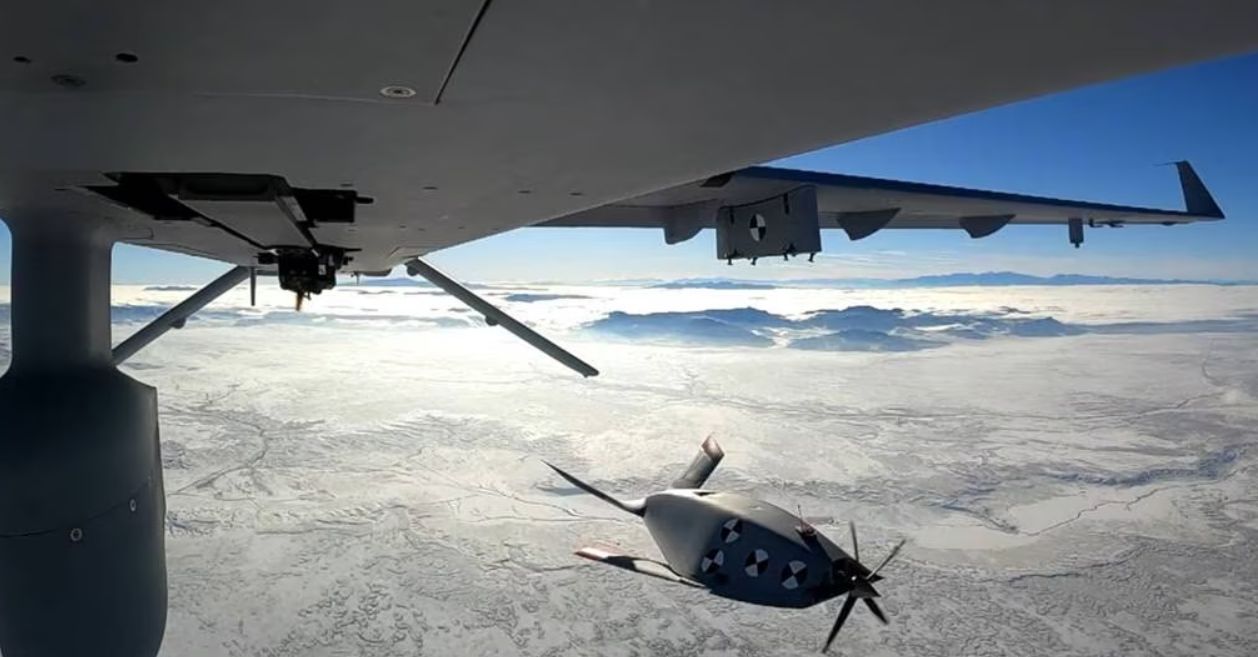A unique capability was demonstrated by the US defense manufacturer General Atomics when its iconic Gray Eagle combat drone launched an ‘Eaglet’ for the very first time.
1st Time In History, US Deploys F-35 Fighters To Greenland Where Russia & China Are Boosting Military Presence
An Unmanned Aircraft System (UAS) developed by General Atomics took to the skies for the first time in a demonstration at the Dugway Proving Grounds, Utah. The firm that makes the Gray Eagle unmanned aerial system for the American Army has named its air-launched effect, or ALE, ‘Eaglet.’
General Atomics informed that Gray Eagle could transport Eaglet for tens of thousands of kilometers before launching it.
According to a statement released by General Atomics on January 31, Eaglet was launched in December from a US Army-owned Gray Eagle Extended Range UAS as part of a project jointly funded by the service’s Combat Capabilities Development Army Research Laboratory and Aviation & Missile Center.
Gray Eagle Extended Range (GE-ER) is a next-generation advanced derivative of the battle-proven Gray Eagle Unmanned Aircraft System (UAS).
In support of the warfighter, this drone conducts long-duration UAS surveillance, communications relay, and weapon delivery missions. The launch of Eaglet from such a system will take that capability even further.
BREAKING: GA-ASI and @USArmy’s new air-launched effect (ALE), Eaglet, safely separates from under the wing of Gray Eagle.
Eaglet is the latest survivable ALE that leverages larger, more powerful sensors and payloads, expanding multi-domain operations for commanders. pic.twitter.com/DSPpyRmVme
— GA-ASI (@GenAtomics_ASI) January 31, 2023
The test launch comes when the US military has invariably focused on preparing for combat in contested airspaces. The days of free reign enjoyed by US combat drones that collected crucial intelligence and rained down destruction on enemies are over due to the air defense capabilities developed by its adversaries.
This is why the concept of ALE was introduced by the US military a few years ago. As part of a broader strategy, the US seeks to develop a family of smaller drones that can be launched from larger manned or unmanned aircraft that can work together or as a swarm.
This is where the General Atomics’ Eaglet could play a significant role.
However, this is not the first time the combat-hardened Gray Eagle drone launched ALE. For example, the drone launched ALE developed by L3Harris for the Army’s Edge event at Dugway in 2021.
The system that participated in the event has a range of more than 300 kilometers and can fly at speeds of more than 200 knots.
What Do We Know About The Eaglet?
Even though the details about the all-new Eaglet remain scarce, previous reports have given some information on the specifications of this ALE. With its pop-out wings extended, the propeller-driven Eaglet has a span of 10.5 feet, weighs less than 200 pounds, and has a maximum airspeed of 115 knots.
It has a range of about 700 kilometers (435 miles), or about eight hours, and can carry a payload of between 20 and 30 pounds. Its service ceiling is roughly 15,000 feet at its highest point.
It has been noted that the Eaglet aims to make it possible for the now-vulnerable legacy drone fleet to keep offering surveillance and striking capabilities while remaining safely out of range of hostile anti-access/area denial (A2/AD) systems. The Gray Eagle has been used in combat by the US Army to great success.

This is significant given that tensions continue to brew in the Indo-Pacific, and several military experts have opined that a conflict between the US and China could only be a matter of years. China’s A2/AD capabilities are world-known, with US Pacific Air Force Commander General Kenneth Wilsbach vindicating them in one of his interactions last year.
He argued that it would be considerably more appropriate to deploy “attritable” unmanned aircraft against China rather than high-end stealth fighter jets such as F-35s or F-22s. Further, it is pertinent to note here that Armed forces are looking for advanced unmanned aircraft that can be deployed repeatedly and, ideally, never be shot down.
Further, Senior Director Strategic Communications & Marketing for General Atomics, Aeronautical Systems C. Mark Brinkley shared critical last year: “Imagine a Gray Eagle ER carrying four Eaglets is flying an ISR mission near hostilities. The UAS can launch its Eaglets forward into hostile airspace, where this ALE quartet can work in four-part harmony to extend the sensing envelope of the host UAS, provide electronic or kinetic warfare options, or simply disrupt an adversary’s mission planning.”
The US ALE drones that can be launched by other unmanned systems far away from the blanket of hostile air defense could likely prove to be a game changer in combat.
This becomes imperative as the US is diligently working on a manned-unmanned teaming concept to navigate contested airspaces.
Not just that, it has been emphasized by military leaders and experts within the United States that working on launching a swarm of drones or more expendable aircraft instead of its high-end manned fighter jets could be the way to go in case of combat with a highly defended enemy like China.
This is also evidenced in the Skyborg Program launched by it.
As for the Eaglet, General Atomics President David Alexander said in the statement that the ALE is “intended to be a low-cost, survivable UAS with the versatility to be launched from a Gray Eagle, rotary-wing aircraft, or ground vehicles.” He added that “it enables extended reach of sensors and increased lethality while providing survivability for manned aircraft.”
The Eaglet will next participate in other exercises to better assess its capabilities. Army Futures Command, the organization in charge of modernizing the Army, approved an initial capability refinement document for ALE in the fall of 2019.
- Contact the author at sakshi.tiwari9555 (at) gmail.com
- Follow EurAsian Times on Google News




